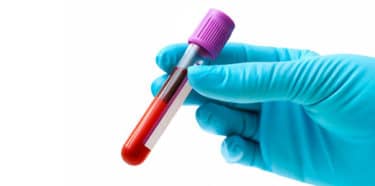A Pap smear (Smear test or Pap test) helps prevent cervical cancer in women by detecting cellular changes in the cervix that may be caused by HPV. HPV is a common contagious virus that causes genital warts, and increases the risk of cervical cancer. Women between 21 and 64 years of age are recommended to have it done regularly. Thus, cellular disorders are identified at an early stage before they develop into uterine or cervical cancer. Regular Pap scans have been proven to reduce cancer and mortality by 80%.
Table of Contents
What is a Pap Smear?
A Pap smear test is a screening procedure for cervical cancer, which analyzes cells collected from cervix during screening. The test aims to detect changes in cervical cells in healthy women. These cellular changes may be caused by cancer, pre-cancer or sexually transmitted human papilloma virus (HPV).
If the test is positive, which means there are abnormal cells, the physician may request an HPV test and colposcopy. Early detection of abnormal changes allows early treatment of the cells before they develop into cancer. Sexually active women are recommended to have it done once a year. (1)
What is a Pap smear test for?
A Pap smear is a way to detect abnormal cervical cells before they become cancerous; precancerous or cancerous lesions when they can still be treated. Human Papilloma Virus (HPV) is the main reason why normal cells in the cervix become cancer-precursor cells. Therefore, sometimes the collected cells are also checked for HPV.
The Pap smear, together with the HPV test, is among the most effective ways to prevent the development of cervical cancer. These tests have been proven to greatly reduce the number of cervical cancer and mortality from disease.
Early diagnosis helps abnormal cells be easily treated without becoming cancerous. However, the smear test is done only for a screening purpose; in case of a doubt, cervical biopsy is performed for a definite diagnosis.

Who needs a smear test?
Most women aged between 21 and 65 should have regular Pap smears.
- Women aged between 21 and 29 should be tested every three years.
- For women aged between 30 and 65 years, if the Pap test is combined with an HPV test, the test should be done every 5 years; if there is no HPV, the Pap test should be performed every three years. It may vary for women with a history of pre-cancerous or cancerous lesions and should be customized.
Some women may be at high risk of cancer or infection and may need to have more frequent tests if they have:
- Abnormal Pap smear results in the past
- HIV infection
- Impaired immune system due to organ transplantation, chemotherapy or chronic corticosteroid use
- A history of smoking
- Been exposed in the womb to a drug called DES (Diethylstilbestrol), a synthetic form of estrogen
For women over 65 years of age who have a normal Pap smear result or have undergone surgery to remove the uterus and cervix (total hysterectomy), future screening may not be necessary.
Cervical cancer and smear tests
The cervix is the lower part of the uterus, combining the uterus and vagina. Changes in cervical cells can cause cervical cancer. Some pre-cancerous changes in the cervix may subsequently turn into cancer.

If not untreated, it may metastasize to other organs such as the uterus, ovaries, liver or lungs. Cervical cancer is among the most common cancers in women. Having sexual life at an early age, multiple sex partners or smoking increase the risk of cancer.
The main reason for cervical cancers is the infection caused by the sexually transmitted HPV virus. All sexually active women are at risk of developing HPV. HPV may not cause any problems in most people, and can be destroyed by our bodies over time. However, there are more than 100 different types, and some types can lead to genital warts or cancer. (2)
HPV mostly affects the mouth, throat or genital area. Treatment is required if it causes changes in cervical cells. The HPV virus may remain dormant for years and may become suddenly active after years. It is therefore recommended that all women, regardless of the level of their sexual activities, go for cervical cancer screening with Pap smears every three years from the age of 21 years.
HPV test is a part of cervical screening, however it is also possible to detect HPV from a Pap smear sample. HPV vaccine can prevent more than 70% of cervical cancers. (3)
Is pap smear test safe during pregnancy?
Pap smear is safe in the first 24 weeks of pregnancy, and does not lead to miscarriage, however can cause light bleeding. After 24 weeks, the test can be painful. You should wait up to 12 weeks after birth to get better results.
How is the pap smear test done?
The Pap smear is usually done with pelvic examination. It can also be combined with the human papilloma virus (HPV) test, a common infection that can cause cervical cancer in women aged over 30 years. In some cases, HPV testing may replace Pap smear. During the procedure: (4)
- A device called a speculum is inserted into the vagina, and the cervix is accessed by opening the vaginal walls.
- Then, a small soft spatula or brush helps to take a cell sample from the cervix.
- The cell sample is put in a liquid and sent to the laboratory for analysis of changes in cervical cells.
- The test takes about 3 minutes, and results arrive within a few days to about 2 weeks, depending on the clinic or laboratory.
The test may cause slight discomfort, but never a long-term pain. Very slight vaginal bleeding (spotting) can be experienced after the test.
What you avoid before a smear test?
You should avoid certain activities a few days before the smear test, since they may affect the results:
- Within 24 hours before the test, tampons, vaginal creams or medicines should not be used, sexual intercourse should be avoided and the vagina should not be washed.
- If there is a genital infection or discharge, it should first be treated.
How can I make a smear test more comfortable?
- It is important to stay calm and breathe deeply during the procedure. If lying on the back is uncomfortable, the patient may be asked to lie on his/her left side with the knees bent (left lateral position).
- A smear test should be done when there is no vaginal bleeding because it may affect results. The best time to take the test is about five days after the last day of your period.
- The doctor should be told if the patient is in menopause. As people get older, the vagina narrows and the vaginal walls become difficult to open, which may make the test more uncomfortable. Speculum has different sizes, therefore if the standard size is uncomfortable, a smaller size can be asked.
Pap smear test results
There are two possible results in Pap smear: Negative result indicates normal cervical cells; positive signs an abnormal problem, such as infection or cell disorder.
Normal Pap smear
If the cells in cervix are normal, screening may not be necessary for three to five years, depending on age and medical history. However, some studies show that the test is less effective in obese women. In these cases, follow-up is recommended within 1 to 2 years.
Abnormal Pap smear
Abnormal changes in cervical cells do not always indicate cancer. Some may be abnormal cells that can be precancerous. There are several abnormal cell levels: atypical, mild, moderate, severe dysplasia and in situ carcinoma. In this case, the doctor may recommend additional tests to diagnose the cause of the changes. Usually, many cells return to normal on their own, but some other abnormal cells can turn into cancer if left untreated. Finding and treating these cells at an early stage help prevent cancer. (5)
Uncertain or false Pap smear
Such a result indicates that there are not enough cells in the sample, a small number of abnormal cells, the presence of blood or inflammatory cells obstructing abnormal cells, or another problem that makes it difficult for the laboratory to get accurate results. Most probably, the test will be treated.
How to read Pap smear results?
Depending on the scale of cancer precursor changes in the cervix detected by the smear test, they can be classified as follows:
- Atypical squamous cells of uncertain importance (ASCUS): This result indicates that there are slightly abnormal squamous cells, but the changes do not clearly indicate precancerous cells; in this case, the sample is re-evaluated.
- Squamous intraepithelial lesion (LSIL): It shows that sample cells from the smear test may be precursors. Depending on their degree, additional tests may be required.
- Atypical glandular cells: These cells may appear abnormal, but it is uncertain whether they have cancer; further testing is required.
- Squamous cell cancer or adenocarcinoma cells: It means that the sample cells are abnormal and may be cancerous, the doctor will perform an immediate assessment. With a procedure called colposcopy, he/she can take a closer look at the cervical tissue and can also take a tissue sample (biopsy) from any area that appears abnormal. The tissue sample is sent to the laboratory for a definitive diagnosis. If results show pre-cancerous cell growth, treatment will be proposed.
How often do you need a Pap smear?
The Pap test should be repeated for women aged between 21 and 65 every three years. However, frequency depends on several factors. If certain risk factors are concerned, the doctor may recommend Pap smears more often, regardless of age.
Where can I get a Pap test done?
You can get it done by consulting a gynecologist at the gynecology and obstetrics clinics of hospitals.





are pap smears painful? I am 20 and about to get one.